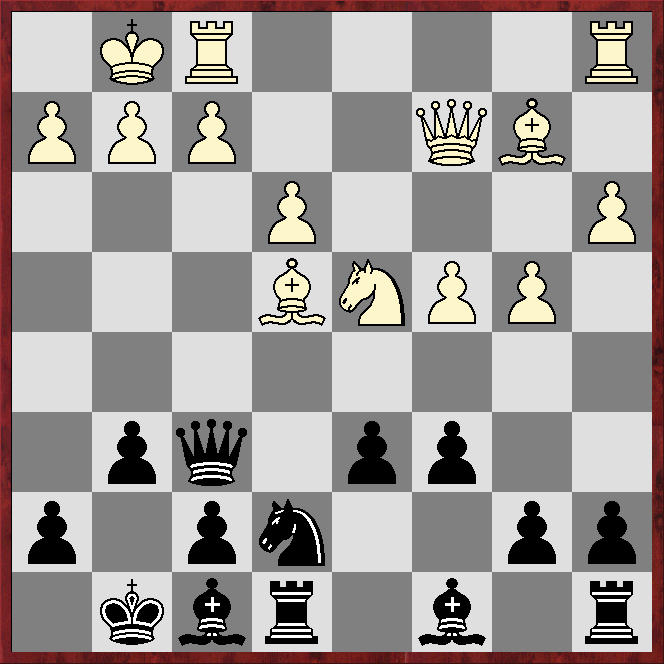Spanton (140 BCF) - C Sergeant*
Doncaster & District League 1980
English Four Knights
1.c4 e5 2.Nc3 Nf6 3.Nc3 Nf6 4.e3!?
I had been much taken by Raymond Keene's The Openings In Modern Theory And Practice, which came out in 1979 in hardback. One of the lines covered in the book is this interesting move in the Four Knights Variation of the English.
4...Bb4
This is the main reply, scoring 47% in ChessBase's 2025 Mega database.
5.Qc2 0-0
This is the commonest continuation, although also popular is giving up the bishop-pair with 5...Bxc3!?, when the main line in Mega25 runs 6.Qxc3 Qe7 7.a3!? d5 8.d5 8.d4 exd4 9.Nxd4 Nxd4 10.Qxd4 c5!? 11.Qh4, with an unclear position that sees Stockfish17 and Dragon1's evaluations fluctuate, but generally favouring White.
*****
*****
*****
*****
6.Nd5!?
This seems to have been first played by Vasja Pirc at the 1936 Olympiad in Warsaw. He lost to Andor Lilienthal, and the move did not catch on, but it was revived in the 1960s and 1970s by, among others, Benko, Korchnoi, Miles and Keene.
6...Re8 7.a3
The main move in Mega25 is 7.Qf5!?, and this was played against me in Kevin Thurlow (2283) - Spanton (2274), States & Regions Division Two Correspondence 2021, which continued 7...d6 8.Nxf6 gxf6!? (Korchnoi and Timman beat Keene with the text in 1977, and it is probably slightly better than 8...Qxf6, played by Ljubojević in a draw against Keene, also in 1977) 9.Qh5 d5 10.Bd3!? e4 11.cxd5 Bf8 12.a3!? exd3 13.dxc6, and now I played the apparent-novelty 13...a5!? (known, and preferred by the engines, is 13...bxc6), when 14.cxb7 Bxb7 was approximately equal (½–½, 27 moves).
7...Bd6!?
The engines do not like this, preferring the main move 7...Bf8 or the rare 7...e4!?
8.Bd3
Stockfish17 prefers 8.Ng5!?, but Dragon1 fluctuates between the two moves.
8...g6?!
Probably better is 8...h6.
9.Nxf6+?!
This is the engines' second choice, at least for a while (Stockfish17 comes to promote 9.Rb1 to second place), but they much prefer 9.h4!?
9...Qxf6 10.0-0 Bf8 11.Be4 d6 12.b4 Ne7 13.d4 exd4 14.Nxd4 c6 15.Bb2
 |
| White's play along the long dark diagonal is the most significant feature of the position - Black has to be careful |
*****
*****
*****
*****
15...Qg5?!
Occupying the diagonal with 15...Bg7 is probably better (the reply 16.Nxc6?? would be a gross error in view of 16...Qxb2).
16.Nf3 Qg4??
Correct is 16...Qh6, so if, as in the game, 17.Qc3, Black has 17...Bg7.
17.Qc3 f6
There is no better way of preventing Qh8 with mate, but Black is anyway lost.
18.Qxf6 Rd8 19.Ng5 1-0
*I have no further details, although the ECF has an unrated CR Sergeant listed as Active and a member of NCB (presumably National Coal Board), but without a rating history.
LESSON: a fianchettoed king's position without the bishop occupying the hole at g7 (g2 for White) can be very vulnerable to play on the long diagonal.

No comments:
Post a Comment